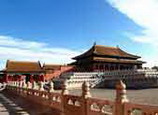
Steep climb ahead
Qin acknowledges that at around 400 yuan ($65) per expedition, climbing is as a sport out of reach for many ordinary Chinese.
"Climbing as a hobby is beyond many people's imagination, but to those who have a steady income yet aren't obsessed with pursuing a material life, climbing beckons with its challenges," Qin explained. "This is why climbing is so popular in developed countries. It's also the same reason why growing numbers of climbers can be found in first-tier Chinese cities."
Adams doesn't share Qin's optimism that climbing will evolve into a profitable industry in Beijing, saying he believes the capital still lacks a commercial climbing atmosphere.
"The best way for a beginner to start is to go to a climbing gym, of which Beijing has four. But at these gyms the only thing staff do is charge you and then leave you alone. No instructions are given and no guides are available, which turns many newbies away," noted Adams.
Despite its pricy stigma, Jurchenko says it is unfair to categorize climbing with other elitist sports. "People spend lots of money on golf or skiing, but for climbing there isn't much need to spend a lot of money. Can you imagine saying, 'Hey, take a look at my new rope!' or 'How much did you spend on that rope?' This makes some Chinese view climbing as unstylish," Jurchenko said.
But with growing wealth and more outdoor climbing routes and indoor climbing walls, Qin insists it's only a matter of time before China witnesses a climbing boom.
"Money used to be the major reason that kept Chinese away from climbing. When climbing came to China 20 years ago, there were no climbing equipment manufacturers. People had to purchase imported gear priced at hundreds of dollars. This turned many Chinese away," said Qin.
"Nowadays, domestically-made climbing gear has become more affordable. We have solid economic basis now, so I'm sure this industry has a promising future."

















 Modern movie dream in retro Mingguo street
Modern movie dream in retro Mingguo street


![]()
